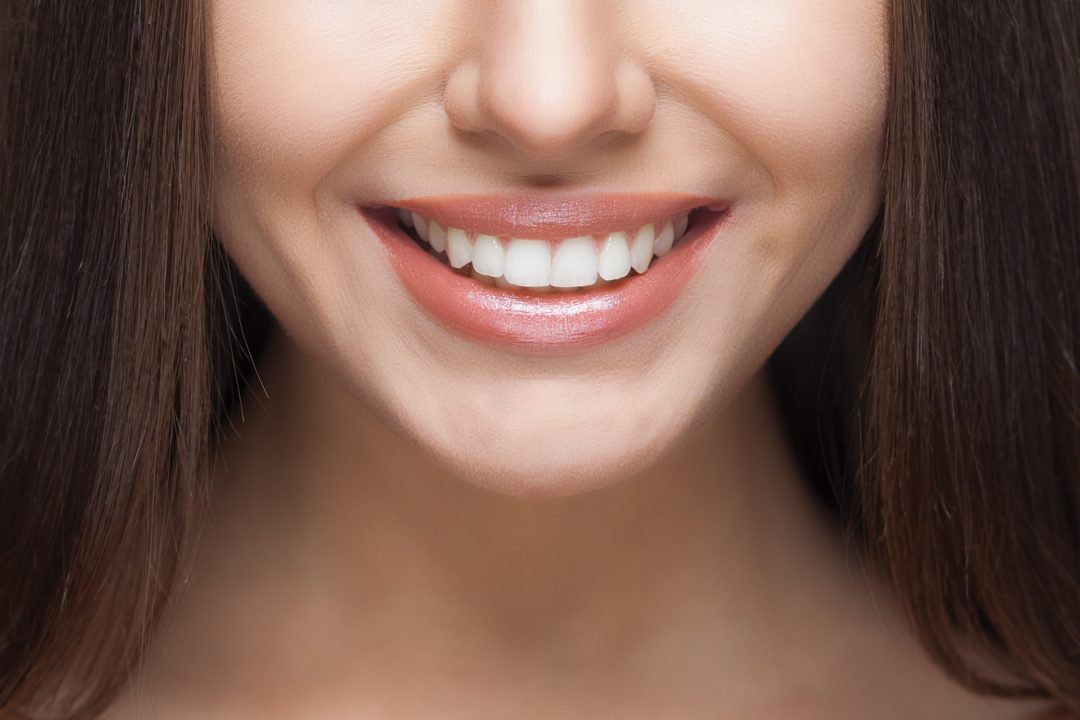The best way to maintain a healthy smile is to eat a proper diet. The ideal diet for healthy teeth and gums consists mainly of plant-based, whole foods like raw fruits and vegetables. Avoid artificial flavors, colors, preservatives, GMOs, and refined sugars. Look out for coffee, tea, colas, wines, and certain fruits and vegetables that can stain teeth. Consuming a healthy diet that is low in sugar and practicing proper oral hygiene has the power to whiten and re-mineralize teeth, re-build enamel, and heal gums (2).
Oil pulling, an ancient Ayurvedic practice (from Hindu traditional medicine), is intended to remove toxins from the body while healing teeth and gums. Oil pulling involves swishing a spoonful of oil through the mouth for 15-20 minutes while squeezing it through the teeth. Most use coconut oil because of its antibacterial properties. Although there are extensive anecdotal reports, the science behind oil pulling’s effectiveness is still debated (3).
Currently, no long-term studies on activated charcoal as an ingredient in toothpaste exist, however, it is said to clean, whiten and detox teeth, and eliminate bad breath. Because charcoal is an abrasive ingredient, dentists advise against using it more than once every other week, as it can deteriorate enamel (4). Oral care products containing activated charcoal can be extremely messy and may turn your mouth and sink black. Followers of the activated charcoal trend, however, swear by its whitening and breath freshening properties.
The use of coral calcium is an emerging toothpaste trend. It is said to raise the pH (alkalinity) of saliva, which can help combat acidity that leads to tooth and enamel deterioration. Coral calcium in toothpaste may also help to whiten teeth, freshen breath, reduce the risk of cavities, and maintain healthy tooth enamel (5).
Baking soda, a somewhat common ingredient in commercial toothpaste, is a natural remedy for halitosis; or bad breath. Baking soda is said to restore the imbalance of acid in the body caused when residue from ingredients like sugar adhere to the teeth. Baking soda is also used to treat gum disease and whiten teeth. It can be made into a paste and brushed onto the teeth or used as a rinse with warm water (6).
Xylitol, a natural sugar alternative derived from plants, is backed by several studies that suggest it can support oral health. Xylitol starves bacteria in the mouth, as opposed to table sugar (sucrose), which feeds the bacteria. This feeding process can cause bacteria to reproduce and form harmful acids which may deteriorate enamel, create tooth decay, and lead to cavity formation (7). Because bacteria are unable to digest xylitol, it prevents them from feeding and multiplying. When bacteria have consumed xylitol, they are unable to ingest glucose, which eventually causes them to starve to death. Xylitol is also said to help repair deteriorated enamel by reducing the acidity in saliva and help reduce acid-driven enamel deterioration. Increased saliva production aids in this as well. This is why many dentists recommend chewing gum that is sweetened with xylitol. In one study, using xylitol-sweetened chewing gum reduced levels of the harmful bacteria by 27-75% (8).
Dental professional Shirley Gutkowski, RDH, BSDH, believes cranberry may be an oral care breakthrough, specifically for senior citizens who rely on the help of nursing assistants to keep their mouths clean. Assistants are often not equipped to deal with lack of cooperation from patients who may suffer from anything from dementia to paralysis. When administered orally, a shot of sugar-free cranberry can help coat the teeth to absorb food debris and combat bacteria that adheres to the surfaces of teeth. Manufacturers are working towards developing products containing cranberry and xylitol that may simplify dental hygiene for assisted living patients and their caretakers (9).
As for gum health, there are many benefits of gum massage. It can help improve blood flow and circulation, reduce the risk of gum disease, and help restore receding gums. Gum brushes are traditionally made of rubber and can be used as part of a healthy brushing and flossing routine (10). To massage gums, use the rubberized tip of the instrument to massage the tissue in a circular motion along the periodontal line.
Oral hygiene, although often overlooked, is an important component of overall wellbeing. Visit your dentist regularly for professional cleanings, and do your research before diving headfirst into commercial oral care products.WF
References
- , Elizabeth. “12 Natural Toothpaste Alternatives That Will Surprise You.” The Nourished Life, Dec. 6, 2016.
- Edwards, Allene. “Heal Cavities, Gum Disease, Naturally with Organic Oral Care – Toothpaste Recipes Included.” Organic Lifestyle Magazine, Oct. 19, 2016.
- Mama, Katie - Wellness. “Oil Pulling: Benefits of & How to Do It | Wellness Mama.” Wellness Mama®, September 2017.









